牛津高中英语 模块3 module3 unit3 reading Lost civilizations
- 格式:ppt
- 大小:6.56 MB
- 文档页数:33
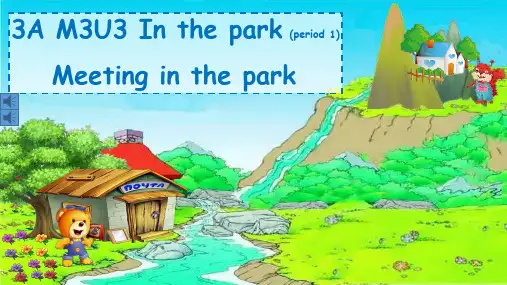
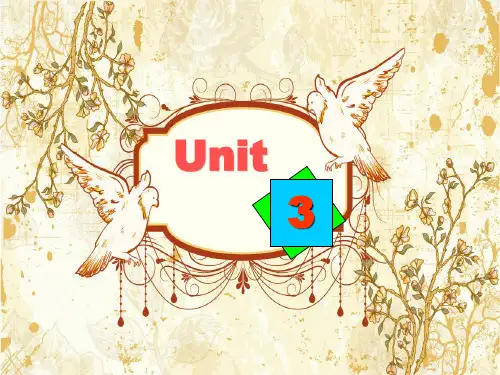
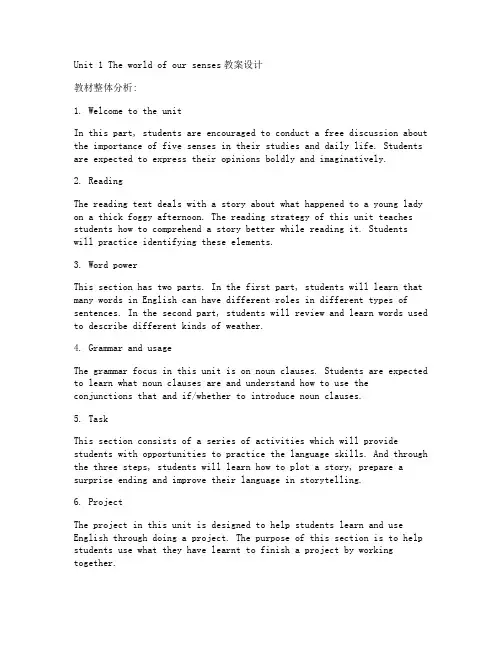
Unit 1 The world of our senses教案设计教材整体分析:1. Welcome to the unitIn this part, students are encouraged to conduct a free discussion about the importance of five senses in their studies and daily life. Students are expected to express their opinions boldly and imaginatively.2. ReadingThe reading text deals with a story about what happened to a young lady on a thick foggy afternoon. The reading strategy of this unit teaches students how to comprehend a story better while reading it. Studentswill practice identifying these elements.3. Word powerThis section has two parts. In the first part, students will learn that many words in English can have different roles in different types of sentences. In the second part, students will review and learn words used to describe different kinds of weather.4. Grammar and usageThe grammar focus in this unit is on noun clauses. Students are expected to learn what noun clauses are and understand how to use the conjunctions that and if/whether to introduce noun clauses.5. TaskThis section consists of a series of activities which will provide students with opportunities to practice the language skills. And through the three steps, students will learn how to plot a story, prepare a surprise ending and improve their language in storytelling.6. ProjectThe project in this unit is designed to help students learn and use English through doing a project. The purpose of this section is to help students use what they have learnt to finish a project by working together.7. Self-assessmentThis section aims to help students determine the progress they have made.Period 1. Welcome to the unitTeaching goals:Encourage students speak out to practice their oral English .Arose their interest in learning this unit through activities.Let them know the importance of senses in daily life.Teaching important and difficult points:Help students prepare for their discussion, making sure that they are fully prepared before the lesson.Teaching ProceduresStep1. BrainstormingAsk students the following questions:1. With what do we see and hear?2. How do we know whether a dish is delicious?3. How do we know that a flower has a pleasant smell?4. What do we do when we want to know whether the water in the basin is hot or cold?5. How do we know about the world around us?As we all know, almost everyone has five senses, which are used everywhere and all the time. We learn about the world through the five senses. We use the five senses to study, work and relax, but there are some people who have lost one or more of their senses.Step2 Presentation1.What would happen if you lost one or two of your senses?A person who cannot see is blind and someone who cannot hear is deaf..2. Do you know how blind people can read?(They can read by touching raised dots which represent numbers and letters. This system is called Braille.)3. How do the deaf communicate with each other?(They use body language or sign language.)Step3 DiscussionLook at the four pictures and answer the question below each picture.1.What can you see in this picture?2.How would you judge the length of the two lines?3.How can you prove that the two lines are straight?4.Can the symbols be read in only one way?5.Why are people misled by their own eyes?Step4 Language studyFill in the blanks with words that have something to do with “senses”:When he got there, he _________ that there was a dark hole. He ________ into it, but could ________ nothing. He ________ with his ears, he could _______ nothing, either. He _________ it for a long time. He _______ something strange. He ___________ the side of the hole. It ______ hot. Suddenly some noises were ________ from the hole. It ________ like someone was cooking inside.Step5 Discussion1. Read the three questions in the short passage and discuss them in groups of four.2. Report your answers to the whole class.Step6 Assignments1. Preview the reading part, do exercise C1 and C22. Preview the reading strategyPeriod 2 ReadingTeaching goals:Improve Ss’ reading ability.Enable Ss to master some important language points.Make sure Ss can learn to help each other in their daily life.Teaching important and difficult points:Master the use of some language points.( wish for; reach out ; watch out for; pay back…)Retell a story with a surprise ending.Teaching proceduresStep1: Lead-inAsk students to talk about the climate or the weather in the place where they live:What’s the weather usually like in spring in Liyang?Which season do you think is the best? Why?Do we sometime have foggy days here? When?How do you feel on a foggy day?Have you ever lost your way in the fog? What would you do if you gotlost in the fog?Which city has the name of “foggy city”?Step2: Reading1. Ask students to go through the passage as quickly as they can and try to find answers to the four questions in part A.2. Ask students to read the passage again and complete partsC1and C2.3. Ask students to fill in the blanks according to the text.Step 3: ListeningListening to the text and read together with it.Step 4: Reading strategy1. Guide students to read the Reading strategy for the article and teach them the elements of a story.2. Give students another story to read and practice identifying the essential elements of a story.Step 5: PracticeAsk students to complete Parts D and E.Step 6: Assignments1. Finish A1 and A2 on page 90 of the Workbook.2. Retell the story in their own words.3. Find out the difficult points in the passage.Period 3 Language studyTeaching goals:Help students understand fully of the text.Deal with some difficult sentences and useful language pointsTeaching important and difficult points:mastering the use of some of language points: in sight, wish for, reach out, watch out for, pay back, be frozen with, be related to, be linked to, make sense, make the most of, can’t help doing,Teaching proceduresStep1 RevisionRetell the story:Help the students retell the story Fog in their own words. Use the chart to help them:Outside Polly’s working place-----at the bus stop on the street------in the Underground train-----at Green Park station------- in ParkStreet------- at the corner of the street----- in the street near King Street------ at 86 King StreetStep2 Difficult sentencesRead and understand the following sentences, then remember in mind:1. Once out in the street, she walked quickly towards her usual bus stop.2. ‘Sorry, Miss,’ replied the man, ‘the truth is that the fogs too thick for the bus to run that far.3. While the rest of the passengers were getting out, she glanced at the faces around her.4. The tall man was nowhere to be seen.5. As she walked along, she heard the sound of footsteps, but by thetime she reached the corner of the street, the footsteps were gone.6. Polly found herself staring up at a man standing with his handresting on her arm.Step3 Useful words and phrasesStep 4 AssignmentFinish the learning plan.Period 4 Word powerTeaching goals:Make sure students can know the different roles some words can have in different types of sentences.Enable Ss to master the meanings of some words used to describedifferent kinds of weather.Teaching important and difficult points:Train Ss to guess and understand the meanings of the words according to the context and pictures.Teaching proceduresStep 1 RevisionCheck the homework assigned the day before.Step2 BrainstormingStep 2. Brain stormingWrite down two sentences on the blackboard:Once out in the street, she walked quickly towards her usual bus stop.“Here we are, King Street.” He stopped.Which word has two meanings and two parts of speech?How many other words which have more than one part of speech can you think of?Step 3. Parts of speech1. Ask students to read the speech bubbles on page 6. Make sure that they pay attention to the word rest and get them to describe thef=different meanings of it in different parts of speech. Then have them read the instructions for Part A.2. Ask students first to complete the table in Part A individually and then to discuss in pairs the answers. Encourage students to make different sentence.. Then check the answers with the whole class.Step 4. PracticeAsk students to complete part B according to the instructions. Then have one or two of them read the short report.Step5. Describing the weather1.Ask students what words they use to describe different kinds of weather. Write down on the blackboard the word students say.2. Ask students to practice reading in pairs the dialogue in Part A. They may look at the symbols in Part B for reference.3. Have students first look at the symbols for different kinds of weather and then let them read the weather report in the first speech bubble.4. Ask students to complete the second speech bubble by looking at the three pictures below it.Step6. Assignments1. Finish the learning plan exercise2. Review the grammar and usage--- noun clauses.Period 5-6 Grammar and usageTeaching goals:Make sure the students understand what the noun clauses are.Ss should know the different use of noun clauses.Learn to use conjunctions that, if/whether.Teaching important and difficult points:Noun clauses can be used as different parts in a sentence.The use of that in subject clause and the different use of if and whether.Teaching procedures:Step1. Introduction to noun clausesWhat is noun?What is the use of noun?What is noun clause?(by reading some sentences):1.When we will start is not clear.2.Mrs Black won’t believe that her son has become a thief.3. My idea is that we should do it right now.4.I had no idea that you were her friend.Step2. Presentation1. Ask students to read Part 1 on page8 so that they will know that a noun clause can be used as the subject of a sentence. More sentences can be given to the students.1) That he will succeed is certain .2) Whether he will go there is not known .3) What he said is not true .4) Where he hid the money is to be found out .Have students read the sentence in which it is used as an empty subject:Who will go makes no difference.= It makes no difference who will go.That she was able to come made us very happy.=It made us happy that she was able to come.2. Ask students to read Parts 2 so that they will know that a noun clause can be used either as the object of a verb or a preposition in a sentence.1) They know that the habit will kill them.2) He asked how much I paid for the violin.3) He made it clear to the public that he did an important and necessary job .4).I find it necessary that we should do the homework.Ask students to read the two sentences in which it is used as an empty object.3. Ask students to read Part 3 so that they will know that a noun clause can be used as the predicative after the link verb be.1)The question is whether we can rely on him.2)That’s because we were in need of money at that time .3)He looked as if he was going to cry .4)That’s why I was late4.Explain to students what apposition means. Then have the students read Part 4.Step3 PracticeAsk the students to read the article on page 9 and to describe the main idea in their own words. Make sure that they know what they need to do and that they can identify all the noun clauses.Step4 PresentationNoun clauses beginning with that or if/whether1.Ask the students to read Part 1, which is about using that to introduce a noun clause.2. Have students read Part 2, which is about using if or whether to introduce a noun clause.When do we use if/whether to introduce a noun clause?When can we only use whether bet not it?Step5 PracticeAsk students to finish exercises on page11.Step6 Assignment1. Finish the exercises in learning plan.2. Finish C2 on page 92 of the workbook.Period7---8 Task: Telling a storyTeaching goals:Make Ss know the sequence of a story.Train Ss’ ability of telling a story effectively by using pictures with speech bubbles.Improve Ss’ ability of writing a story by using adjectives and adverbs.Teaching important and difficult points:Make sure Ss know the importance of adjectives and adverbs in the story.Enable Ss to write a story correctly.Teaching proceduresStep 1 Revision1. Check homework.2. Do some exercises to revise the noun clauses.Step 2 Skills building 1: Plotting a story1. Ask students to read part A on page 13. They need to know what they have been asked to do and what information they should get whenlistening to the tape. Have them complete the checklist individually, and then ask them to check their answers with their partners to see if they have the same answers. The class can listen to the recording again if necessary.2. Ask students to listen to the conversation and answer the questionsin Part B. After they finish this part, let them check their answers with their partners to make sure that they have got the correct answers.3. Tell students that they will write the beginning of the story using their answers in Part B.Skills building 2: identifying different elements of a comic stripStep3: preparing a story with a surprise ending1. Ask students to read the guidelines on page 15 and make sure that they know what they need to do. Ask them to first work individually andthen to check their answers with their partners. If they have different answers, have them discuss which answer is better.2. In pairs, ask students to work out a surprise ending from the five pictures given in Part A. They should draw a picture, write a caption and add thought, speech or sound bubbles where necessary. Encourage students to use their imagination and create any ending which is surprising. Choose some students’ pictures and show them to the whole class. Ask students to decide which is the best picture with a surprise ending.Skills building 3: using adjectives and adverbs in stories.Step 4: improving your story1. Have students read the guidelines in Part A on page 17. Ask them to go over the adjectives and adverbs given in the box. Guide them to point out which words are adjectives and which are adverbs. Ask them to first fill in the blanks with the words in the box, and then write the last paragraph of the story using the sixth picture they drew in Step2.2. Ask students to think about what good storytellers will do to make others interested and willing to listen to them. Ask students to read the guidelines in Part B. Have them work in pairs to practise telling the story they have just finished. Then ask some students to present their stories in class. The whole class should decide who is the best storyteller.Ask students to read the story of Part A in Writing on page 97 of the Workbook, and then finish Part B. They can do Part B as homework.Step5 Homework1. Ask Ss to write a story.2. Find out the difficult points in Project.Period 9 Project: Producing a TV showTeaching goals:Do some reading.Improve Ss’ ability of writing.Get Ss to cooperate with others.Teaching important and difficult points:Know the general idea of the passage.Make sure Ss know how to write an interesting story.Teaching proceduresStep1 Reading1. Ask students to read the article Shark attacks and find out as much information as they can about sharks.2. Have students read the article again and ask them to find out what unique senses sharks have, what senses sharks use to attack humans and what people can do to protect themselves.3. Ask students to do Part B1 and B2 on page 91 of the Workbook eitherin class or as homework, so they will have a better understanding of the usage of words and phrases learnt in this section.4. Ask students to do Parts D1 and D2 on page 93 of the Workbook as homework to review the useful words, phrases and patterns they have learnt in this unit.Ask students to do the listening exercises in Part A and B on page 96 of the Workbook to learn more about animals’ senses.Step 2 Language pointsI. Deal with some language points for Ss to understand the letters better.II. If Ss still have questions, help to solve them.Step3 Producing a TV showPlanningAsk students to work in groups of four. First ask them to discuss and choose which animal they would like to focus on. Have them write down the animal’s name and one of its unique senses. As some students may keep pets at home, they will be quite familiar with some pet animalssuch as dogs, cats or fish. They can choose one of the animals that they are most familiar with. Students should also choose what type of show they will produce. Each group member will be responsible for researching information about one aspect of the animal.PreparingStudents will go to a zoo, watch an animal documentary, read some books or surf the Internet to get the information they need. While they are doing such things, they need to take notes. They will get together to discuss what should be included in their show. They will make a list which focuses on how the animal uses its senses and think about how to present the information.ProducingStudents each work on a different part of the TV show. When thedifferent parts are put together, each group member should read the writing carefully, correct the mistakes and add some new ideas.PresentingEach group will take turns presenting their TV show to the class by showing their work and narrating. Students can have a discussion to decide which group’s TV show is the best.Step 4 Assignment1.Finish the learning plan2. Prepare for a test.Period 10 Self-assessmentTeaching goals:This part at the end of the unit aims to allow students to determinewhat they have achieved and what else they can do to improve their study.Teaching procedures:1. Do a review test to consolidate what Ss have learned in this unit.2. Let Ss do the self-assessment. Know the situations and help those Ss who have trouble.。
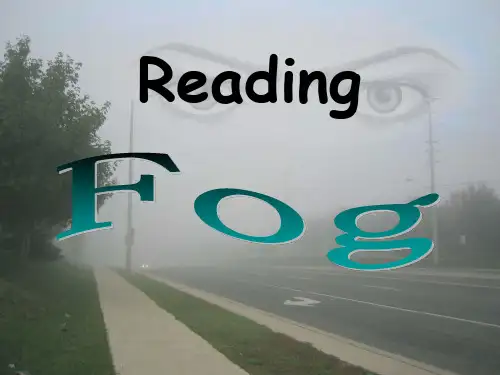
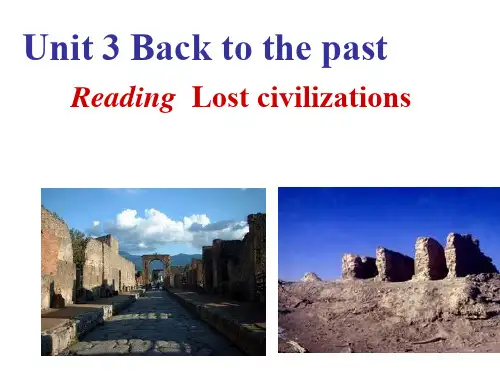
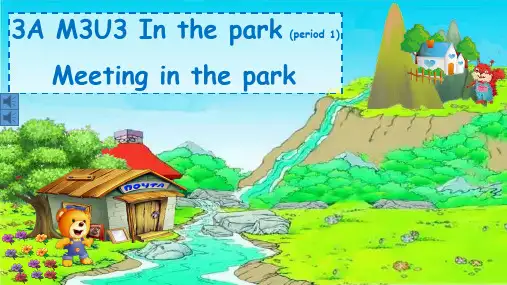
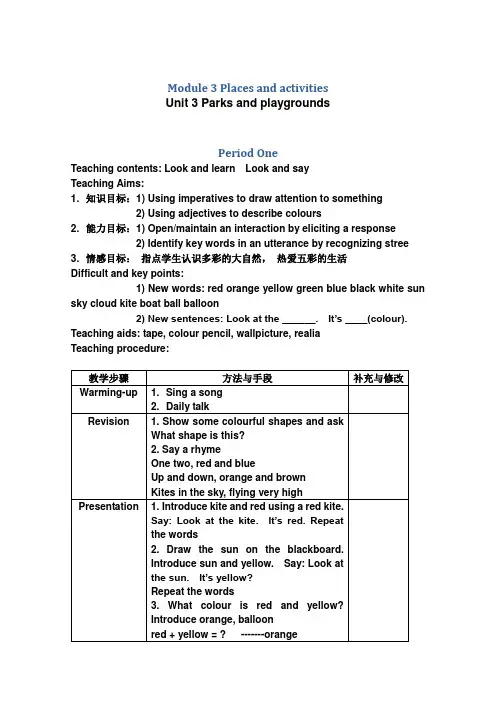
Module 3 Places and activitiesUnit 3 Parks and playgroundsPeriod OneTeaching contents: Look and learn Look and sayTeaching Aims:1. 知识目标:1) Using imperatives to draw attention to something2) Using adjectives to describe colours2. 能力目标:1) Open/maintain an interaction by eliciting a response2) Identify key words in an utterance by recognizing stree3. 情感目标:指点学生认识多彩的大自然,热爱五彩的生活Difficult and key points:1) New words: red orange yellow green blue black white sun sky cloud kite boat ball balloon2) New sentences: Look at the ______. It’s ____(colour). Teaching aids: tape, colour pencil, wallpicture, realiaTeaching procedure:Period TwoTeaching contents: Look and learn Point, ask and answerTeaching Aims:1. 知识目标:1) Using simple imperatives to give instruction2) Using Wh-questions to find out various kinds of specific information about a thing.3) Using pronouns to refer to a particular thing .2. 能力目标:1)Open an interaction by eliciting a response2) Maintain an interaction by providing information to factual questions3. 情感目标:要求学生仔细观察身边的事物Difficult and key points:1) New word: slide swing2) New sentences: Point to the _____.What c olour is it? It’s ______Teaching aids: tape, some pictures, some word cards, maskTeaching procedure:Period ThreeTeaching contents: Play a colour game Learn the sounds Teaching Aims:1. 知识目标:1) Using imperatives to draw attention to something2) Using Wh-questions to find out specific information abouta thing. Using pronouns to refer to a particular thing.3) Using yes/no questions to obtain a simple response4) Pronounce correctly words in isolation with initial sounds / ai /& / i /2. 能力目标:1) Maintain an interaction by providing information inresponse to factual questions2) Discriminate between words with vowel sound ‘i’ inboth open and closed syllable forms3. 情感目标:培养学生相互协作的精神,共同学习Difficult and key points:1)New sentences: Is it _____(colour)?Yes, it is. No, it isn’t.2) Vowel sound: I i--/ ai /& / i /Teaching aids: tape, some word and pictures cardsTeaching procedure:Period FourTeaching contents: Say and actTeaching Aims:1. 知识目标:1) Using formulaic expressions to attract people’s attention2) Using yes/no question to obtain simple response2. 能力目标:1) Open an interaction by attracting someone’s attention2) Maintain an interaction by providing information in response to factual question3. 情感目标:赞扬助人为乐的优良品质,鼓励学生在生活和学习上要互相帮助,做到礼貌待人。
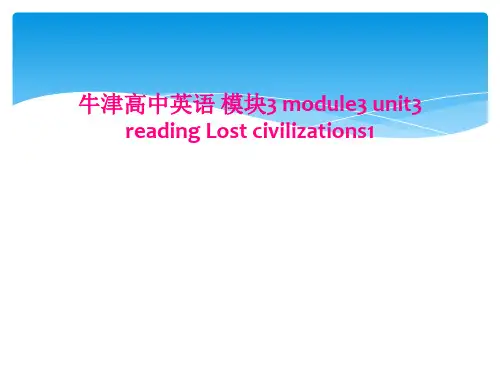
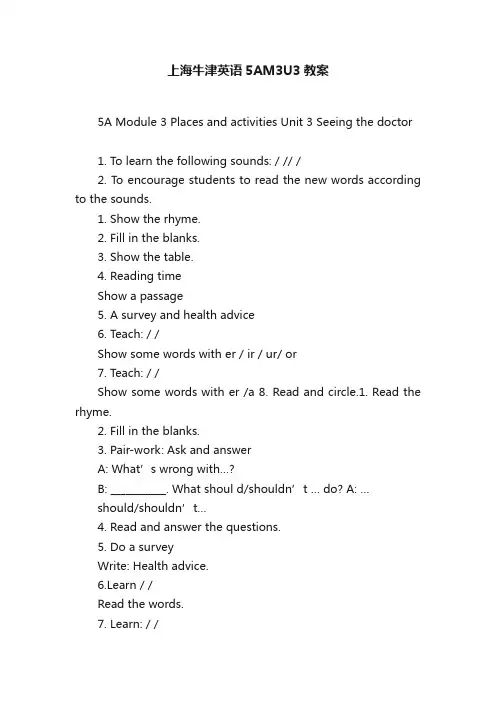
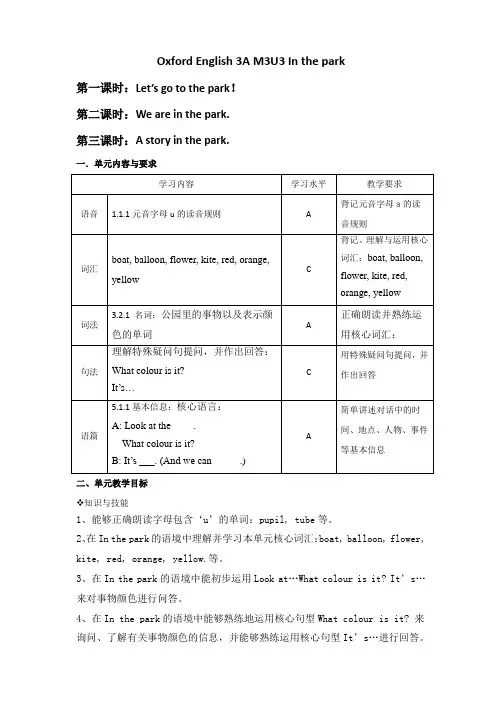
Oxford English 3A M3U3 In the park第一课时:Let’s go to the park!第二课时:We are in the park.第三课时:A story in the park.一.单元内容与要求二、单元教学目标❖知识与技能1、能够正确朗读字母包含‘u’的单词:pupil, tube等。
2、在In the park的语境中理解并学习本单元核心词汇:boat, balloon, flower, kite, red, orange, yellow.等。
3、在In the park的语境中能初步运用Look at…What colour is it? It’s…来对事物颜色进行问答。
4、在In the park的语境中能够熟练地运用核心句型What colour is it? 来询问、了解有关事物颜色的信息,并能够熟练运用核心句型It’s…进行回答。
5、在In the park的语境中能够尝试运用can, row a boat, smell the flower, swing, nice, fun, happy等词汇描述在公园中的快乐活动。
❖文化与情感通过在In the park语境中的学习,来激发学生热爱自然、亲近自然的品质,体验公园玩乐中的快乐。
❖学习策略1、通过听说读的方式,以语篇语境带动核心词句的学习。
2、以师生交流、生生交流的方式初步运用核心词汇和句型。
3、以角色扮演活动、小组交流活动等方法,进一步运用核心词汇和句型。
4.通过表演、描述等法,综合运用核心词汇和句型,提高语用能力。
【教学重难点】围绕在In the park的语境,熟练运用Look at…What colour is it? It’s…来对事物颜色进行问答,通过学习激发学生热爱自然、亲近自然的品质, 通过学习体验公园玩乐中的快乐。
三、学情与教材分析四.单课教学目标五、单课时的文本内容与教学过程Period 1 Let’s go to the park!一、第一课时文本主体学习文本:Let’s go to the park!Dad: Do you like the park?Kitty: Yes, I like the park! Look at the flower. It’s purple. How beautiful! Alice: Look at the tree. It’s green. How nice!Dad: Let’s go to the park!Kitty&Alice: Great!Dad: I have a kite.Kitty: What colour is it?Dad: Look! It’s orange.Kitty: Wow! How nice! I have a balloon.Alice: What colour is it?Kitty: Look! It’s blue.Alice: Wow! How beautiful! I have a boat.Dad: What colour is it?Alice: Look! It’s red.Dad: Wow! How cool!辅助文本辅助文本(一)White and red! What colour is it? I don’t know. White and red! What colour is it? It’s pink.辅助文本(二)Kite, kite. (boat)I have a kite. (boat)Colour the kite. (boat)DIY!预设输出语言:I have a …What colour is it?Look! It’s …Wow! How …!二、第一课时教学过程Period 2 We are in the park!一、第二课时主体学习文本第二课时辅助文本High up high,Swing to the sky.The sky is blue,I don’t know why.High up high,Swing to the sky.The sun is round,I don’t know why.High up high,Swing to the sky.The clouds are white,I don’t know why.第二课时预设输出语言: A: Look at the ____.What colour is it?B: It’s ___. (And we can _____.) A: Wow! How ____!三、第二课时教学过程教学反思:Period 3 A story in the park !一、第三课时文本主体学习文本:预设输出语言:A: Look at …’s ____.What colour is it?B: It’s ___. (And we can _____.)A: Wow! How ____!二、第三课时教学过程Procedures Contents Methods Purpose六、单元评价量表。

沪教牛津版三年级上册英语Module 3 Places and activitiesUnit 3 Parks and playgrounds第三教时(3st PERIOD)一、主要新授内容(Main new contents )Look and learn: sky, cloud, tree, boat, slide, swingLook and say: Look at … /Point to…二、学习目标(Learning objectives)1.学生能够用英语表述围绕在他们周围的一些事物;2.学生能够掌握冠词a, an,the的区别及用法;3.学生能够运用Look at … /Point to…发指令并作出相应的动作;4.学生能够根据实际情景,灵活运用所学单词及句型。
三、活动介绍(ACTIVITIES)(一)任务前期准备(PRE-TASK PREPARATION)Pre-task preparation的环节中,通过在记忆猜谜等游戏中的对话热身运动使学生快速进入学习状态。
另外,通过师生或者生生间的交流,创设真实的语境,为后面新知的引出打下埋伏。
Activity 1 Playing a memory game1.教学辅助(Aids)1)电脑屏幕(3A-M3-U3-P3-1)2)屏幕2Activity 2 Playing a guessing game1.教学辅助(Aids)一盒蜡笔2(二)任务实施过程(WHILE-TASK PROCEDURE)1. 新知识的引入(PRESETATION)学生通过听听、说说和做做的活动,自然引出新授内容,让学生对所要学习的知识进行视听上的感知。
Activity 1 Saying and doing1.教学辅助(Aids)1)电脑录像(3A-M3-U3-P3-2)2)屏幕Activity 2 Answering the questions1.教学辅助(Aids)图片2.新知识的操练(PRACTICE)1)机械性操练(MECHANICAL PRACTICE)学生通过模仿、变换声音及儿歌等形式的仿说活动来操练单词和句型,做到语音语调基本正确,并能理解其的含义。
牛津英语二年级上册Module 3 Unit 3练习题及答案Unit 3 In the kitchen (1)Ⅰ. Look and circle (根据所给的单词、把正确的单词部分圈出来):1. bowl2. platespoon 3.4. chopsticks5. how6. are7. manyⅡ. Look and number (看图、将单词的编号写在相应的图片下):( ) ( ) ( ) ( ) Ⅲ. Read and match(读句子、将下列句子与相应的图片连线):●A.●1. The bowl is on the box.●B.●2. The bowl is on the chair.●C.3. The chopsticks and the bowl are●on the chair.●●D.4. The bowl and the chopsticks areon the box.●E.5. The bowl is on the desk.●Ⅳ. Read and judge (判断下列句子是否符合所给的情景、用☺或☹表示):1.看见了一只盘子、你说:I can see a plate.2.想知道筷子的颜色、你问:What colour are the sticks?3.告诉朋友、你的碗不大、你说:My bowl is big.4.想知道朋友有多少把调羹、你问:How many spoons?5.你喜欢蓝筷子、你说:I like green chopsticks.Module 3 Places and activitiesUnit 3 In the kitchen (2)Ⅰ. Read and circle (读一读、圈出在意义上属于不同类的单词): 1.2. 3. 4.Ⅱ 1. --- How many big boxes?--- Two.A. ( )B. ( )2. Look, the bowl is yellow.A. bowlB. blueC. ball A. spoon B. soup C. plate A. howB. whatC. manyA. canB. isC. areA. ( )B. ( )3. Is the spoon short? No.A. ( )B. ( )4. ---Do you like chopsticks?--- Yes.A. ( )B. ( )5. --- How many chairs?--- There is one chair.A. ( )B. ( )Ⅲ. Look and circle(看图、圈出正确的单词):1. 2. 3. 4. 5.bowl plate spoon chopsticks queendoll plates soup forks kingⅣ. Read and judge(判断下列句子是否符合图意、用√或╳表示):1. 2.Look, it's a green spoon. ( ) There are five peaches. ( )3. 4.Look at the rabbits. ( ) The mouse is on the desk. ( )5. 6.How many girls?There are two. ( ) I can see chopsticks. ( )Module 3 Places and activitiesUnit 3 In the kitchen (3)Ⅰ. Read and circle(读一读、圈出正确的图片):1. 2.bowl spoons A. B. A. B.3. 4.short chopsticks plates A. B. A. B.5. 6.on the table under the chairA. B. A. B.Ⅱ. Read and number(读句子、在相应的图片下编号):1. --- How many apples?2. --- How many pears?--- There is one. --- There are two.3. --- How many apples?4. --- How many pears?--- There are two. --- There is one.Ⅲ. Choose the best answer(选择最佳答案、将字母代号写在前面的括号内):( ) 1. Give ___________ a book, please.A. IB. meC. my ( ) 2. How many ___________?A. peachB. peachesC. /( ) 3. There __________ one cake.A. isB. amC. are ( ) 4. __________ is a queen.A. HeB. SheC. It( ) 5. The ____________ are small and white(白色的).A. elephantsB. tigersC. rabbits ( ) 6. Here ____________ are.A. youB. yourC. you’re Ⅳ. Read and choose(在括号内写上相应单词的编号):like( ) 1. There ___________ ten green frogs.( ) 2. Hello, I __________ swim in summer.( ) 3. Do you __________ dolls?( ) 4. My father __________ tall and fat.( ) 5. Good morning. I ___________ Danny.Ⅴ. Read and draw(读一读、画出相应的图片):Module 3 Places and activitiesUnit 3 In the kitchen (4)Ⅰ. Look and circle(圈出下列单词中所含的字母Qq和Rr):1. 2. 3.queen jar question4. 5. 6.RICE BAEBEQUEMORNINGⅡ. Look and write(正确抄写下列字母、字母组):Q R r q QRq Qqr Rqr rQR___________________________________________________ ______________________________________________________________ ______________________________________________________________ ______________________________________________________________ ___________Ⅲ.Read and tick(看图、在符合要求的句子前打√):1. 2.( ) A. Put the bowl on the box. ( ) A. Do you like spoons? Yes.( ) B. Put the bowl in the box. ( ) B. Do you like spoons? No.3. 4.( ) A. The chopsticks are blue. ( ) A. How many plates? There are four.( ) B. The chopsticks are green. ( ) B. How many plates? There are five.Ⅳ. Look and match(看图、将下列图片与相应的句子连线):1.● ● A. How many bowls? There are four.2.● ●B. How many plates? There are six.3.● ● C. How many chopsticks? Five.4.● ●D. How many spoons?There are four.5.● ●E. How many spoons? There are five.Ⅴ. Read and number(阅读对话、用1→4给下列图片编号):There are two bowls Look. Ginger is on the chair.on the table.The bowls are on the floor. There is a table and achair in the room.Module 3 Places and activitiesUnit 3 In the kitchen (5)Ⅰ. Look and write(正确抄写下列字母组和单词):OoPpQqRr EeBbCcDd flmn nine FACE chair SPOON_________________________________________________________________________________________________________________ ______________________________________________________________ ______________________________________________________________ ___________Ⅱ. Read and number(读一读、将下列图片的编号写在相应的句Give me a spoon, please. Give me chopsticks, please.Give me a bowl, please. Give me a plate, please.Ⅲ. Read and choose(读一读、圈出在意义上不属于同一类的单词、圈在字母代号上):1. A. bowl B. blue C. plate2. A. spoon B. room C. chopsticks3. A. is B. are C. can4. A. one B. ten C. on5. A. it B. in C. underⅣ. Choose the best answer(选择最佳答案、将字母代号写在前面的括号内):( ) 1. Look at the rabbit. The ears are ___________.A. tallB. longC. short( ) 2. There __________ a big peach.A. amB. isC. are ( ) 3. How many ___________?A. queensB. queenC. a queen( ) 4. This is ___________ kitchen.A. IB. I’mC. my ( ) 5. Look, the bread is ___________ the plate.A. inB. onC. at ( ) 6. Ginger is a ___________.A. catB. dogC. rabbitⅤ. Read and judge(判断下列图片是否符合所给的句子、用√或╳表示):1. 2.Ginger is on the chair. There are two bowls on the table.( ) ( )3. 4.The chopsticks are red. How many spoons? There’s one.( ) ( )Ⅵ. Read and judge(阅读短文、判断正误、用T或F表示):This is a room. It’s big. It’s clean. There is a table and a chair in the room. The table is big and green. The chair is small. It’s green, too. Look, the cat is on the chair. It’s small. It likes fish. It can run very fast. Do you like the cat?( ) 1. The room is not small.( ) 2. The desk is in the room.( ) 3. The table and the chair are green.( ) 4. The cat is under the chair.( ) 5. Cats like fish.Module 3 Places and activitiesUnit 3 In the kitchen (1)Ⅰ. 1. bowl 2. plate 3. spoon 4. chopsticks 5. how 6. are 7. manyⅡ. 4312Ⅲ. 1. C 2. B 3. D 4. E 5. AⅣ. 1. ☺ 2. ☹ 3. ☹ 4. ☺ 5. ☹Module 3 Places and activitiesUnit 3 In the kitchen (2)Ⅰ. 1. B 2. B 3. C 4. AⅡ. 1. B 2. A 3. A 4. A 5. BⅢ. 1. bowl 2. plates 3. soup 4. chopsticks 5. queenⅣ. 1. √ 2. ╳ 3. √ 4. ╳ 5. √ 6. ╳Module 3 Places and activitiesUnit 3 In the kitchen (3)Ⅰ. 1. A 2. A 3. B 4. A 5. B 6. AⅡ. 3241Ⅲ. 1. B 2. B 3. A 4. B 5. C 6. AⅣ. 1. C 2. D 3. E 4. A 5. BⅤ. 1. one rubber 2. three pears 3. five bicycles 4. eight eggsModule 3 Places and activitiesUnit 3 In the kitchen (4)Ⅰ. 1. queen 2. jar 3. question 4. RICE 5. BARBEQUE 6. MORNINGⅡ. Q R r q QRq Qqr Rqr rQRⅢ. 1. A 2. A 3. B 4. AⅣ. 1. C 2. B 3. A 4. E 5. DⅤ. 2431Module 3 Places and activitiesUnit 3 In the kitchen (5)Ⅰ. OoPpQqRr EeBbCcDd flmn nine FACE chair SPOONⅡ. 3124Ⅲ. 1. B 2. B 3. C 4. C 5. AⅣ. 1. B 2. B 3. A 4. C 5. B 6. AⅤ. 1. ╳ 2. √ 3. ╳ 4. ╳Ⅵ. 1. T 2. F 3. T 4. F 5. T。
Module l Unit 11.lie in存在于,在于2.rise to能够处理3.make a difference起作用,有影响4.make the most of充分利用,尽情享受5.take advantage of利用6.last but not least最后但同样重要的7.look forward to盼望,期待8.as a result of由于9.stick to坚持;固守,维持10.over time随着时间流逝,久而久之11.can’t wait to 迫不及待地12.take part in 参与,参加13.in time 迟早;最后;及时14.pay attention to注意Module l Unit 21.see eye to eye with sb (on sth )(在某事上)与某人看法一致2.shoot up快速长高,蹿个儿3.calm down平静,镇静,安静4.from one’s point of view从某人的角度、观点出发5.think sth through充分考虑,全盘考虑,想透6.back down承认错误,认输7.cheer up (使)变得高兴,振奋起来8.be on sb’s back about sth 缠磨,烦扰9.draw sth out of sth 提取,支取10.turn out结果是;关掉;制造11.look through浏览,翻阅12.give out分发;用完,耗尽13.graduate from从……毕业14.look after照顾;照料15.count out逐一数出16.depend on/upon依靠Module l Unit 31.on the rocks(关系)陷于困境,濒临崩溃2.out of one’s sight 脱离某人的视线3.make it能够出席;准时到达;获得成功4.at a loss不知所措,困惑5.in the wrong有错,应承担责任6.in any case无论如何,不管怎样7.let go of放弃,摒弃;松手,放开8.count on依赖,依靠,指望9.eat away at腐蚀,侵蚀,逐渐破坏10.come between...and...损害……之间的关系,离间;妨碍11.in person亲自,亲身12.high point最有意思(或最令人愉快、最好)的部分13.through thick and thin不顾艰难险阻,同甘共苦14.in one’s opinion在某人看来15.get over克服;恢复常态16.bring out使显现,使表现出17.smooth out消除(问题),克服(困难)18.be meant to do sth 注定要做某事,应做某事19.take on呈现,具有20.in full measure最大程度地,最大限度地Module l Unit 41.pass out昏迷,失去知觉2.slim down变苗条,减肥3.side effect副作用4.take in摄入,吸收5.get into shape强身健体6.contribute to促成,造成7.in the short/long term从短期/长期看8.in addition此外9.hang over使忧心忡忡,担心可能发生10.guard against防范,防止,提防11.fight a losing battle打一场无望取胜的仗12.live up to达到,符合,不辜负13.end up最终成为,最终处于14.show off显示,展示;炫耀,卖弄15.take pride in为……自豪,为……骄傲Module 2 Unit 11.science fiction科幻电影(或小说等)2.behind the scenes在后台,在幕后3.not to mention更不用说,且不说4.do justice to恰当处理(某人或某事);公平对待(某人或某事),给予公正的评价5.in addition to除……以外(还)6.pull up停车,停止7.a huge amount of大量的8.take place发生9.be familiar with对……熟悉10.attach great importance to认为……十分重要11.separate from...与……分开12.contribute to促成,导致13.make efforts to do...努力做……14.be regarded as...被看作……Module 2 Unit 21.do wonders创造奇迹,产生神奇作用2.over the long term长期3.stick with持续,坚持4.make up for弥补,补偿5.put the finishing touches to对……进行最后的润色或修饰6.in response to对……作出反应;作为对……的回复7.under the weather略有不适,不舒服8.no wonder不足为奇,并不奇怪9.be rooted in起源于10.prevent...from...阻止……11.to start with首先,作为开始12.get over克服13.play a role in在……中发挥作用,扮演角色14.keep up保持,维持15.have an effect on对……有影响Module 2 Unit 31.anything but决不,根本不2.in the air可感觉到;在传播中3.be caught up in被卷入,陷入4.pass down使世代相传,流传5.fall on适逢,正当6.in honour of为向……表示敬意7.set off使爆炸;出发,动身8.dress up穿上盛装;打扮;装扮9.make/leave a(n)...impression on/upon sb 给某人留下一个……的印象10.stand for 象征,代表;主张11.make a promise许诺,允诺12.be covered with被……覆盖;充满着……13.all sorts of各种各样的14.breathe in吸气15.go by (时间)流逝;过去16.stay up late熬夜Module 2 Unit 41.devote oneself to致力,专心,献身2.in store (for sb)即将发生(在某人身上),等待着(某人)3.in summary总的来说4.draw on凭借,利用5.ought to应该,应当6.in particular尤其,特别7.clear up (头脑)清醒;使整洁,清理8.be on the point of doing sth 正要做某事9.appeal to对……有吸引力;向……呼吁10.be capable of有能力;能够11.lie in 在于12.pull on拉动13.hold on坚持;抓住14.take on呈现;承担15.get over克服16.bring...to one’s attention使某人注意……Module 3 Unit 11.in turn相应地,转而;轮流,依次2.break down使分解(为),使变化(成)3.breathe life into给……带来起色,注入活力4.due to由于,因为5.build up逐渐增加,扩大6.come up with想出,想到7.call for(公开)要求;需要8.spring to mind突然记起(或想到)9.get rid of摆脱,丢弃,扔掉10.give rise to使发生(或存在);引起11.play a role in...在……中起重要作用;扮演重要角色12.in length在长度上13.a variety of各种各样的14.be made up of由……组成15.sign up 报名16.in defence of保护;为……做解释或辩护Module 3 Unit 21.at large整个,全部2.safe and sound安然无恙的3.occur to被想到,浮现在脑中4.keep one’s head (在困境中)保持冷静5.run out of用完,耗尽6.take the form of呈现……的形状;采取……的形式7.break out突然开始,爆发8.far and wide到处,各处9.hold on to抓紧,不放开;(替别人或更长时间地)保存某物10.to one’s relief让某人宽慰的是11.in detail详细地12.flood in涌入13.in all directions朝着四面八方14.above all最重要的是15.in the distance在远处Module 3 Unit 31.take off突然大受欢迎,迅速流行2.to a certain extent在一定程度上3.at one’s fingertips掌握(信息),熟悉、精通(知识等),了如指掌4.bring up使显示在计算机屏幕上,调出;提出5.above all else最重要的是,尤其是6.belong to属于,归……所有7.set up创建,建立8.be glued to sth 全神贯注看着某物,离某物很近9.shoot past飞驰而过10.knock sb off one’s feet撞倒某人,使某人双脚离地11.be lost in全神贯注,沉浸于12.cut back on减少,削减13.bring about引起,导致14.get in touch with与……取得联系Module 3 Unit 41.refer to查阅,参考;提到,谈及2.speed up(使)加速3.pay off成功,奏效,达到目的4.through trial and error反复试验5.by accident偶然,意外地6.with a bang很成功;引人注目,有强烈影响7.let sb down使某人失望8.as to关于,至于9.take it for granted想当然地认为,认为……是理所当然10.put forward提出,提议,建议11.make a difference有影响,起作用12.thanks to 由于;幸亏13.far from the truth根本不是事实14.work out计算出;理解。
Module 3: Places and activities重点单词:Unit 1:My school Unit 2:Shopping Unit 3:In the parkdance v. 跳舞apple n. 苹果balloon n. 气球library n. 图书馆at prep. 在(某处)black adj. 黑色的our pron. 我们的ball n. 球blue adj. 蓝色的photo n. 照片banana n. 香蕉boat n. 小船play basketball 打篮球bicycle n. 自行车color v. 给……涂色n.颜色playground n. 操场an art. 一;一个flower n. 花read v. 阅读buy v. 买green adj. 绿色的rose n. 玫瑰花go v. 去How many 多少(个)school n. 学校happy adj. 快乐的How much 多少(钱)that pron. 那;那个many adj. 许多的ice-cream n. 冰激凌there adv. 在那里may modal v. 可以orange n. 橘子adj. 橙红色的;橘黄色的park n. 公园toilet n. 厕所orange n. 橘子adj. 橙红色的;橘黄色的where adv. (在)哪里peach n. 桃子pupil n. 小学生I’m new here. 我是新来的put v. 放see v. 看见You’re welcome. 不客气。
shop n. 商店toy n. 玩具shopping list 购物单tube n. 试管to prep. 到;去white adj. 白色的supermarket n. 超市yellow adj. 黄色的sure adv. (表示同意)当然wow excel. (表示惊奇)哇;呀Can I help you? 您需要什么?May I have…,please? 请给我……;我能要……吗?Sure. 当然可以。